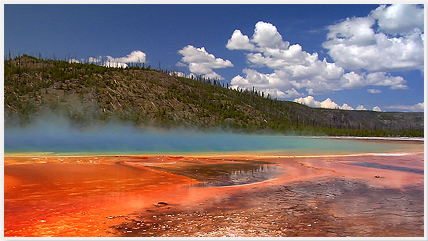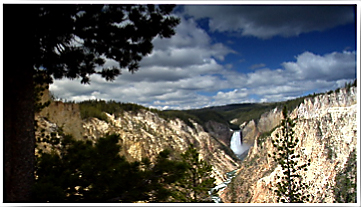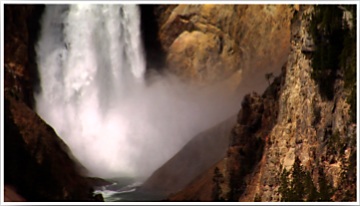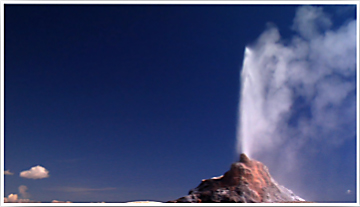Grand Prismatic Spring, Yellowstone National Park
Another of my favorite spots in Yellowstone is Grand Prismatic Spring. Grand Prismatic is the largest hot spring in Yellowstone. Only in New Zealand will you find two springs that are larger. The Hayden Expedition in 1871 named this spring because of its beautiful coloration. Early sketches of the springs seem so exaggerated that geologist A.C. Peale returned in 1878 to verify the colors.
The vivid colors in the spring are the result of pigmented bacteria in the microbial mats that grow around the edges of the mineral-rich water. The bacteria produce colors ranging from green to red; the amount of color in the microbial mats depends on the ratio of chlorophyll to carotenoids. In the summer, the mats tend to be orange and red, whereas in the winter the mats are usually dark green. The center of the pool is sterile due to extreme heat.
The deep blue color of the water in the center of the pool results from a light-absorbing overtone of the hydroxy stretch of water. Though this effect is responsible for making all large bodies of water blue, it is particularly intense in Grand Prismatic Spring because of the high purity and depth of the water in the middle of the spring.
The spring is approximately 250 by 300 feet (75 by 91 m) in size and is 160 feet (49 meters) deep. The spring discharges an estimated 560 gallons (2000 litres) of 160°F (71°C) water per minute.
You can view this clip here.








Follow Us!